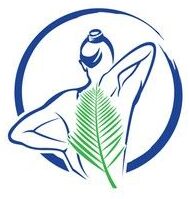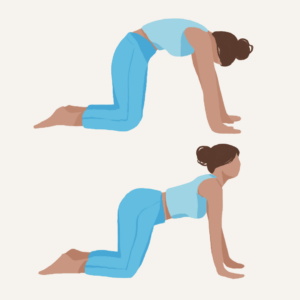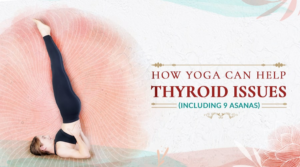There are so many great reasons to add yoga to your exercise routine. Yoga improves muscle tone, flexibility, and balance while also helping you relax and reduce stress thanks to its signature pranayama breathing techniques. Bonus: Studies have also shown that practicing yoga can help reduce stress, anxiety, depression, and chronic pain. Helps you sleep better. Improves overall health and quality of life.
Ready to give it a try? Here are 8 beginner yoga poses (called “asanas”) recommended by yoga instructors.
7 misconceptions about yoga
If you’ve been avoiding the mat or looking for an excuse to skip it, here are seven clarifications to help clear up any misconceptions.
Sukhasana – a simple pose to relieve stress

Sit cross-legged on a yoga mat and place your hands on your lap with your palms facing up. Keep your spine as straight as possible. Press your sitting bones into the floor — in yoga terms, these are called “sit bones.” Close your eyes and inhale.
“This is a great pose for beginners to use as a refresher,” says Gwen Lawrence, yoga instructor to numerous sports teams, athletes, and celebrities . “Just sit on the floor and you can see and feel the perfect external rotation of your legs.” This pose also helps increase back flexibility and relieve stress.
Cat and cow awakens the spine and helps relieve back pain

Place your hands directly under your shoulders and your knees directly under your hips, with your feet on the mat. Distribute your weight evenly on your hands and spread your fingers wide. Inhale and arch your back, dropping your chin to your chest as you arch your back. Feel a stretch from your neck to your tailbone, like a cat. Exhale and lift your head and tilt it back, lowering your back into a spoon position.
“Cat-Cow pose lengthens and awakens the spine, which can help relieve back pain,” says Leah Callis , certified yoga instructor and coauthor of Power Yoga: Strength, Sweat, and Spirit . “It opens up and improves flexibility throughout the spine, neck, chest, and shoulders. We recommend repeating it five to 10 times or more.”
Tree Pose – Vrksasana – Improves Balance

Start by standing upright in this position. Bring your hands together in a prayer position and raise them above your head. Balance on your right foot. Bend your left knee to the left and press your left foot against the inner thigh or ankle of your right leg. (But do not press your foot against your knee to prevent injury.) Hold for 30 seconds. Switch legs and repeat.
“This pose stretches your body from your heels to your toes,” says Sia Vaughn, health and fitness expert and author of Breakthrough: The 5 Living Principles to Defeat Stress, Look Great, and Find Total Well-Being (and mother to actor Vince Vaughn). This pose can also help improve your balance.
Downward Facing Dog Pose – Adho Mukha Svanasana – Increases Flexibility

In Down Dog, your body will be in an upside-down V shape. Start by placing your hands on the mat in front of you with your palms facing down. Place your hands slightly forward of your shoulders. Place your knees on the ground directly below your hips. As you exhale, lift your knees off the ground and lift your hips and hips toward the ceiling. Press your tops of your thighs back and reach your heels toward the floor. Lower your head between your upper arms, making sure it is in line with your upper arms and not bending over. If you notice your lower back rounding, try bending your knees to lengthen your back.
“Downward Dog calms the nervous system, increases overall flexibility, takes pressure off the spine, tones the arms, shapes the legs, and opens the shoulders,” says Kalis. The pose is typically held for five breaths on each side, but can be held longer for increased strength-building benefits . Kalis suggests reaching from your wrists to your hips on an inhale, and deepening your roots from your hips to your heels on an exhale.
Child’s Pose Balasana helps you relax and release tension

From Downward Facing Dog, bend your knees and lower your hips toward your heels, drawing your chest through your knees toward the floor. Drop your shoulders and place your head on the floor. Place your hands at your sides, palms down, or clasp your hands under your forehead to support your head. Breathe in and relax for as long as you need.
“Child’s Pose is one of the most therapeutic poses in yoga and my favorite,” says Charis. “This pose awakens your connection to your breath and your body, sending a gentle energy to every muscle. Awakening your breath from within gives you an opportunity to calm down, reflect, clear your busy mind and rest your body.” Child’s Pose is a great way to rest and relax during your yoga practice or whenever you’re feeling tired or overwhelmed.
Baby Pigeon Pose to Open the Hips

From a push-up position, move your right knee forward between your hands. Slowly extend your left leg back, keeping your knee and top of your foot on the floor, as if you were doing a lunge. Then rotate your right knee toward your right wrist and lower your right knee to the floor, with your right calf flat on the floor and your right foot under your left groin. Lower your torso over your bent leg and rest on the floor or on your elbows. Breathe in and out slowly for five breaths. Press your left foot back to stretch your calf muscles before switching to the other side. Repeat with your left leg bent and your right leg extended.
This pose is popular with runners because it increases hip flexibility and relaxes the glutes and lower back, says Lawrence. “If you run, lift weights, do CrossFit or spin, you need to do this stretch to maintain strength and flexibility and improve performance,” she says. It might be a little difficult at first, but you’ll love the position, Lawrence promises.
Tadasana Mountain Pose to Improve Posture

Lie still with your chest open and your arms at your sides, feeling your feet on the floor, your legs and your back. Next, analyze your posture in front of a mirror. Lawrence had the players stand and hold a long pencil in each hand. “I tell my students to look down at their pencil and see how it’s pointing, like a compass. Are the pencils the same? Is one pointing straight ahead and the other pointing to the three on the clock?”
This posture will let you know if you have any imbalances in your shoulders and give you a clue as to what you need to improve: when your pencil bends inward, your shoulders will also bend inward.
Feet on the Wall Pose – Viparita Karani – Restorative and Revitalizing

This is a great exit pose for both beginners and experienced yoga practitioners. Lie on the floor with your buttocks against the wall. “Walk” your feet straight up along the wall so that your body is in an L shape with your torso flat on the floor and perpendicular to the wall. You can also place a rolled blanket under your hips to support your lower back. For extra support, extend your elbows to the side on the floor. Curl your toes to feel a stretch in the back of your legs. Hold the pose for as long as you like, breathing deeply. To release, draw your knees to your chest and roll to one side.









